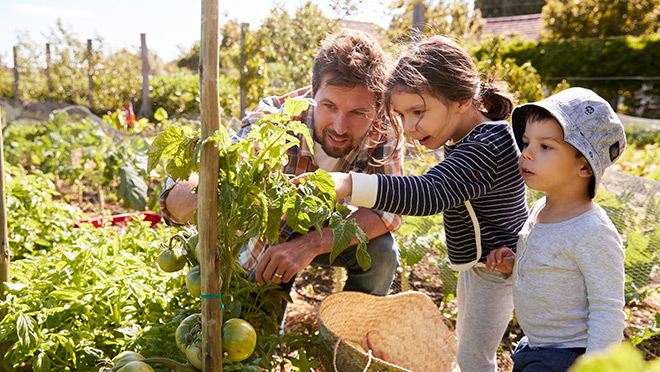10 resolutions for an energy-efficient, sustainable 2022

Changes in behaviour – and in home energy efficiency – are within our grasp
What can we do to shrink our home energy bills and live more sustainably over the next 12 months? That's a question that may not have been top of mind a few years ago, but it's coming into sharp focus with the events of 2021.
Extreme weather events in B.C., in particular, have hammered home the relationship between a warming planet and the incidence of devastating events that can threaten our safety, homes, and livelihoods. A nationwide poll conducted in October, even before record rainfall led to broken highways and flooded communities in B.C., showed that 60% of British Columbians were willing to pay more, or somewhat willing to pay more, to reduce their carbon emissions.
But being more sustainable isn't all about paying more, or sacrificing something. Here are 10 New Year's resolutions you might consider to help you shrink your home energy bills and/or your carbon footprint.
1. Plug leaks in your home
If it seems we won't stop talking about the need to draftproof your home, there's an easy explanation for our persistence. In terms of bang for you buck, low-cost draftproofing of windows, doors, skylights and electrical outlets can cut your heating costs significantly while improving home comfort. And in our increasingly hot summers, you'll save money on cooling costs as well. Oh, and don't forget to fix leaks in taps around the home, too.
Learn how to draftproof your home
2. Avoid food waste (shop wisely, eat your leftovers)
It's so tempting to buy that megapack of romaine lettuce hearts when it's so darn cheap. But purchasing produce, fruit and other perishables in bulk contributes to a staggering amount of food waste. In fact, an estimated one out of four bags of groceries in B.C. is wasted, at a cost of $1,100 per year. Not only is food being wasted while some are going hungry, but the production and transportation of that food adds up in energy costs and carbon emissions. Take steps to cut your food waste by buying specific amounts as part of meal planning, resisting the temptation to buy perishables in bulk when you may not need them, and make eating leftovers a habit.

3. Leave the car at home
Cars can be a convenient and comfortable way to get around, but gas-powered cars are among the greatest carbon-emitters in today's world. If it's practical for you, walk, bike, carpool or use transit whenever you can. If you have a longish daily commute, consider an electric bike or scooter. And if you're looking to buy a new car, make it a plug-in. There are federal and B.C. rebates for the purchase of new electric vehicles under $55,000, plus home, condo and workplace rebates in place for the purchase and installation of Level 2 chargers.
4. Take advantage of renovation rebates
CleanBC and BC Hydro have recently gone bigger than ever with an assortment of energy-efficient renovation rebates, including combined rebates of up to $11,000 for switching from gas heating to an energy-efficient heat pump. Switching from fossil-fuel based heating to a home heated by our clean hydroelectricity significantly reduces your home’s greenhouse gas emissions.
Other rebates include up to $2,000 on heat pumps for upgrading your electric space heating system, insulation rebates of up to $5,500, window and door rebates of up to $3,000, and water heating rebates of up to $1,000.

5. If you're in a strata, get eco-active
Be part of the movement towards strata councils taking into consideration the ecological impact of multi-unit residences. Get on the strata council or push your current council to consider some of the following:
- If common areas, including hallways and stairwells are overheated, look for ways to avoid that wasted heat and energy.
- Update lighting in common areas and parking areas to the latest in energy-efficient bulbs and fixtures.
- Consider a plan to replace gas fireplaces or gas stoves to cleaner electric options.
- Rally the troops to help plan and build a community garden in your neighbourhood as a source of local produce.
- Take advantage of EV ready rebates for the planning, infrastructure work, and purchase and installation of chargers for electric vehicles in the parking areas of your condo or apartment complex.

6. Take fewer flights and/or buy carbon offsets
As access to air travel increases in 2022, consider what returning to normal (or near normal) for your pleasure or business travel means in terms of carbon impacts. While emissions from flying constitute only 3% to 4% of total global emissions, the relatively small percentage of the global population that flies regularly is growing fast. If you're taking more than a few flights a year, your household carbon footprint is almost guaranteed to be much higher than the average Canadian, and that's high, considering Canadians on average are among the biggest carbon emitters on the planet. You can decrease those emissions by flying for business only when necessary, taking fewer holidays involving air travel (perhaps for longer periods), and exploring Canada by car or train instead. See our tips for planning a road trip in an EV. And when you fly, consider buying carbon offsets.
7. Do laundry less often, and hang-dry clothes
If you have kids or teens in your home, you'll know the drill. They toss clothes on the floor and, after wearing them one or two times, they end up in the laundry bin. We tend to wash our clothes too often, and that not only shrinks or damages them, it also takes its toll on energy use and your electricity bill. Research has also shown that clothes shed microplastics each time they're washed, and often wind up as potentially harmful toxins in our oceans. Be selective with the clothes you wash regularly, opt for natural fibres when you can, use cold water as much as possible, and try hang-drying laundry to cut drying costs.

8. Cut kitchen energy use with kettles, small appliances
An electric kettle beats heating water on the stove, and try making it a habit to only heat the amount of water you need for your pot of tea or hot chocolate. Use smaller appliances, including toaster ovens, Instant Pots® and air fryers, to save energy instead of using the range/oven.
9. Eat more veggies, and buy local food when you can
When the Canada Food Guide was updated in 2019, its recommendations for healthy eating included a big shift from meat and dairy toward more fruit, vegetables and plant-based proteins. That's not just a healthy shift – it's also best for the planet. Beef and lamb in particular carry a heavy greenhouse gas footprint, as they produce large amounts of methane during their digestive process. As a greenhouse gas, methane is up to 34 times more potent than CO2.
10. Estimate your carbon footprint, and act to shrink it
Start 2022 by using a footprint calculator – such as this one at footprintcalculator.org – to estimate not just your carbon footprint but your impact in terms of hectares needed to support your household lifestyle. For comparison, consider that per capita, the average Canadian household's emissions are 4.1 tonnes per year, compared to between 1.0 and 2.3 tonnes for those living in the United Kingdom, France, Norway and Germany. Using the calculator, factor in everyone in your household, including flights, commuting, etc., then divide it by the number of people living in your home to see what your per-capita estimate is. Online carbon calculators aren't that accurate, but they're good for estimating carbon impacts, and you can plug in changes in your lifestyle to see how that might lower your emissions.
Related:

